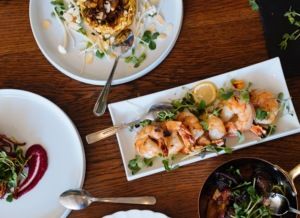Sponsored content
8 Dishes You Must Try in Denmark
This article is more than 3 years old.

Denmark is a country with a rich and delicious culinary tradition that has been passed down through generations. From the humble smørrebrød to the more elaborate stegt flæsk, there is something for everyone to enjoy.
The key to Danish cuisine is simplicity. The focus is on fresh, seasonal ingredients that are cooked to perfection. This results in dishes that are both healthy and delicious.
Danish cuisine has come a long way recently, with chefs experimenting with new flavors and techniques. As a result, some truly delicious dishes can now be found in Denmark. This article will help you explore the best Danish cuisines. Additionally, if you’re a restaurant or a business owner in Denmark, you should also check out LendMe, a finance (lån) platform that will help you fix your finances and boost your revenues. Here are the best Danish Cuisines you must try:
Here are 8 of the best:
1: Smoked herring: This traditional Danish dish is usually served as an appetizer. The herring is smoked over a wood fire, which gives it a lovely flavor. It’s often served with onions, sour cream, and rye bread.
2: Stegt flæsk med persillesovs: This is a classic Danish dish of fried pork belly served with potatoes and parsley sauce. It’s simple but oh-so-delicious!
3: Frikadeller: These are fried meatballs made from pork or veal. They’re usually served with potatoes and gravy and make for a hearty meal.
4: Roast pork: Another popular Danish dish, roast pork, is usually served with potatoes and gravy (sound familiar?). The pork is roasted until it’s crisp but juicy on the inside – yum!
5: Æblekage: This is a traditional Danish dessert of baked apples covered in custard or whipped cream. It’s simple but so satisfying – perfect for those with a sweet tooth!
6: Klapstuk: This unusual dish consists of slices of beef tenderloin pounded thin, then rolled up and braised in red wine and stock. It may not sound appealing, but trust us, it tastes fantastic!
7: Rød grød med fløde: This popular Danish dessert of red berries (usually raspberries or strawberries) is cooked into a thick porridge and served with cream. It’s sweet, tart, and delicious!
8: Sol over Gudhjem: This traditional open sandwich from the island of Bornholm consists of dark rye bread topped with cured ham, cheese, and a sunny-side-up egg. It may not be the healthiest dish, but it sure is tasty!
Discovering Denmark’s delicious traditional cuisine
If you’re looking to try some other traditional Danish dishes, here are a few of our favorites:
Smørrebrød: This dish is typically made with rye bread, topped with various meats, cheeses, and vegetables.
Stegt flæsk: A popular dish made with pork belly fried until crisp. Served with potatoes and gravy.
Ris à l’amande: A classic dessert made with rice pudding and almonds.
So what are you waiting for? Get cooking!
What trends are emerging in Danish cuisine?
There are a few trends that are emerging in Danish cuisine. One is the use of more locally sourced ingredients. This includes using produce that is grown in Denmark, as well as meats and dairy products that come from Danish farms. There is also a trend towards using organic ingredients, as well as those that are ethically and sustainably produced.
Another trend that is emerging is the use of traditional cooking techniques. This includes things like smoking, pickling, and fermenting foods. These techniques add flavor and depth to dishes, and they also help to preserve food for longer periods of time.
Finally, there is a trend towards simplifying dishes. This means using fewer ingredients, and focusing on the quality of those ingredients rather than trying to create complex flavor profiles. This results in food that is both healthy and delicious.
What challenges does traditional Danish cuisine face today?
Traditional Danish cuisine is under threat from a number of factors, including the increasing popularity of foreign foods, the rise of health-consciousness, and the busy lifestyles of many people today.
One of the biggest challenges facing traditional Danish cuisine is the increasing popularity of foreign foods. In recent years, there has been a surge in the popularity of cuisines from all over the world, and many people are now more likely to eat Italian or Chinese food than traditional Danish dishes. This trend is likely to continue in the future, as more and more people are exposed to different types of cuisine through travel and the internet.
Another challenge facing traditional Danish cuisine is the rise of health-consciousness. As people become more aware of the importance of eating healthy, they are less likely to want to eat traditional Danish dishes that are often high in fat and calories. Instead, they are looking for healthier options that still taste good. This trend is likely to continue as people become even more health-conscious in the future.
Finally, another challenge facing traditional Danish cuisine is the busy lifestyles of many people today. With so many people working long hours and having little free time, they are less likely to want to cook traditional Danish dishes that can take a long time to prepare. Instead, they are looking for quick and easy meals that can be prepared quickly and easily. This trend is likely to continue as our lives become even busier in the future.
If you find yourself in Denmark, be sure to try out these eight local dishes!










































